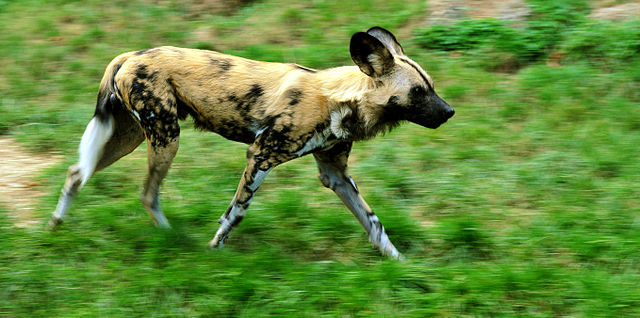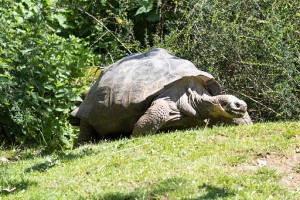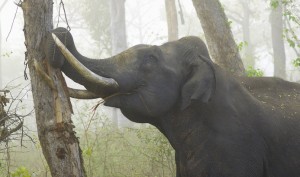Wild Dogs and Bio-Boundaries
It is hoped that Bio-Boundaries could be used for other large predators and territorial species that are under threat from conflict with our ever-increasing human population.
 Image: By Michael Gäbler [CC-BY-3.0 (http://creativecommons.org/licenses/by/3.0)], via Wikimedia Commons
Image: By Michael Gäbler [CC-BY-3.0 (http://creativecommons.org/licenses/by/3.0)], via Wikimedia Commons Just a few decades ago, African Wild Dogs were thriving, with a population of around 500,000 individuals in 39 countries. Now they are one of Africa’s most endangered mammals. Roughly one percent of their population now remains – 3000-5500 individuals in less than 25 countries – and they are continuing to decline across almost their entire range south of the Sahara.
Conversely, Africa’s human population is increasing rapidly, and this is the main reason why the wild dogs are under threat. Wild dog territory is being taken over by the continent’s burgeoning cities. Many dogs are killed in traffic accidents. Domestic dogs transmit diseases to wild dogs, such as rabies, parvo viruses and canine distemper viruses. In 1991, an outbreak of distemper in a village in Kenya is thought to be responsible for the disappearance of wild dogs from the nearby Masai Mara National Reserve. Wild dogs are also killed in traps set up by local people to catch bush meat.
Many local people also kill them due to ignorance, because they believe that they are savage killers. They think that they will eat their goats so kill them intentionally, by poisoning entire packs or destroying dens containing puppies by setting them on fire.
A challenge for conservationists who are trying to protect wild dogs is the fact that conventional fences that are used to keep other animals away from humans and lessen the conflict between them just don’t work with wild dogs. They are too intelligent to be stopped by fences; they simply find a way around or under them. However, research from the Norwegian University of Science and Technology have discovered that so-called “Bio-Boundaries” might work instead.
Wild dog packs are reluctant to intrude into territories of rival packs, territories which are marked by urine scent trails. Therefore, researchers collected sand that had been sprayed with urine by wild dogs and moved it near to other packs to keep them inside a specific area. The researchers said they “found that the scent marks from foreign packs kept the wild dogs from moving into those areas.” So, they could prevent the packs from travelling into areas where conflict may occur by making them think that it was another pack’s territory. However, “the problem is not spreading urine around. The problem is collecting it,” the researchers stated.
Dr John “Tico” McNutt (founder of the Botswana Predator Conservation Trust) is working on that problem in Maun, Botswana, where he has opened a wild dog chemical ecology lab. If he can synthesise the dogs’ scent then he can create artificial urine that will be more practical than collecting real wild dog urine, and will be easier to use in order to keep wild dogs in areas that are safe for them.
It is also hoped that Bio-Boundaries could be used for other large predators and territorial species that are under threat from conflict with our ever-increasing human population.





No comments yet.